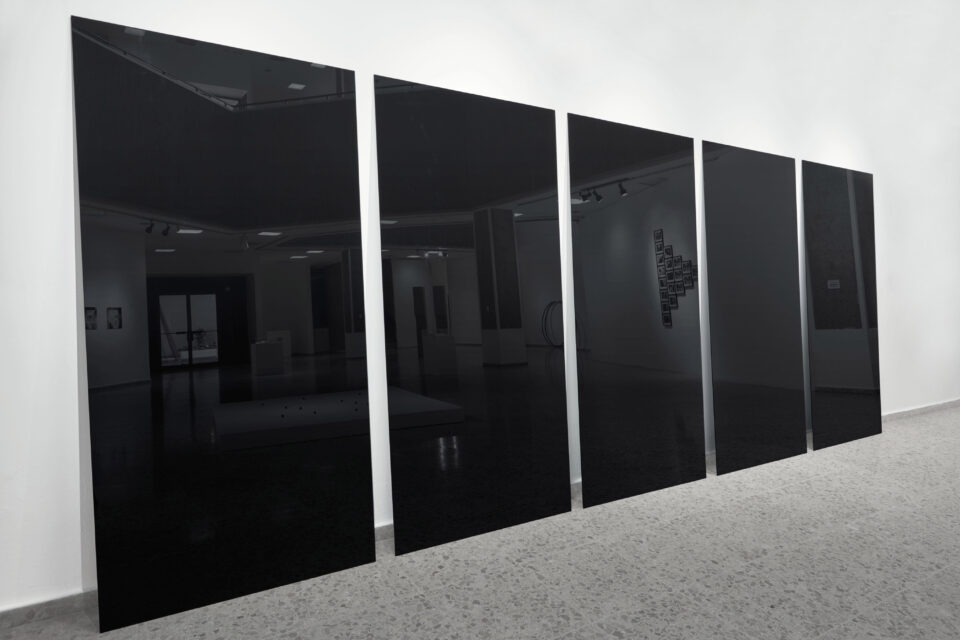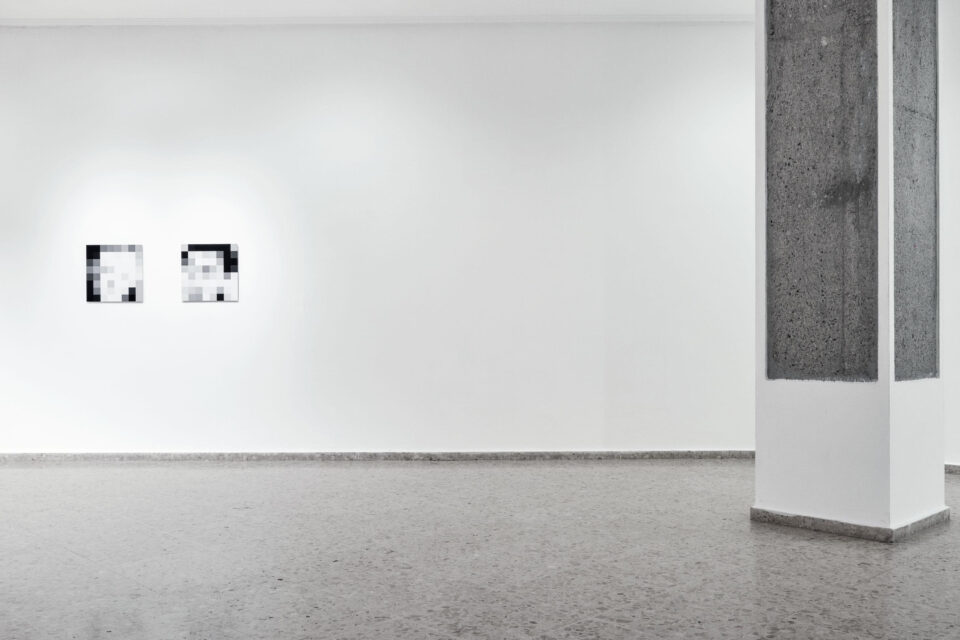Una línea, por breve que sea, consta de un número infinito de puntos
Derived from Jorge Luis Borges’ short story “The Book of Sand” and Edward Kasner and James Newman’s “Mathematics and the Imagination,” the exhibition’s title, “A line, however short, has an infinite number of points,” alludes to a general notion of perception. It suggests that even the simplest objects, under close scrutiny, extend infinitely, receding beyond resolution and proving exceedingly elusive.
For this exhibition, Andrés Ramírez Gaviria brings together works exploring notions of quantification, calculation, computation, or measurements. The artist has infused an element of strangeness into these seemingly mundane subjects through clever manipulations and playful contradictions.
In “Beyond Black,” viewers encounter glass panels covered with a nanometer-scale grid. This intervention in these monochromatic surfaces, laden with historical art references, prompts questions about the conception and perception of technology’s image and that of the art object. The work aims to provoke viewers’ doubts while soliciting acceptance and belief. The reflective surface mirrors viewers’ gaze, evoking self-doubt akin to being on the receiving end of a joke and instinctively searching for the imperceptible.
In “A Mathematical Theory of Communication,” Gaviria reprints Claude E. Shannon’s seminal text of the same title. All signs, symbols, tables, and mathematical formulas are rearranged to maximize information, as defined by Shannon. The book presents a jumbled and indecipherable arrangement, yet its generating process aligns with the innovative principles of the original text.
The additional works include a large three-dimensional replica of one of the first shapes drawn using the computer program Sketchpad, developed by computer scientist Ivan Sutherland in 1963. Additionally, there’s a representation of Darren Aronofsky’s 1998 science fiction film, Pi, reduced to 19 film frames corresponding to the exponential growth rate of the Fibonacci numbers. Also on view are 12 playing marbles made from meteorites found in Northwest Africa. These coded systems of assimilation, translation, and recontextualization manifest the artist’s enduring fascination with the complex processes through which meanings are constructed.
To mark this exhibition, a new monograph on Gaviria’s work featuring critical texts by Laura L. Wellen and Quinn Dupont will be published.








